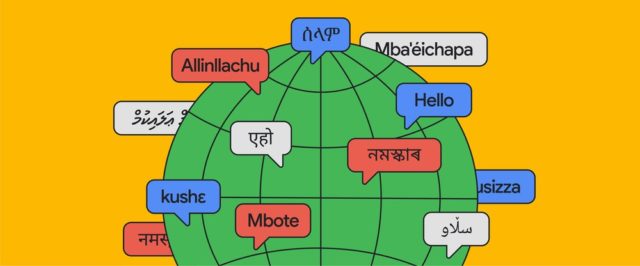Google le dedica un poco de tiempo en el Google I/O a Google Translate, una de las aplicaciones web más usadas en el mundo hoy en día, sí, además de la calculadora, claro.
Para los locales veremos la aparición del Guaraní, Quechua y Aimará, así que latinoamérica se encuentra presente con tres idiomas muy usados hoy en día, que no todo es Español y Portugués.
En total se calcula que los nuevos idiomas cubren a 300 millones de personas, son los siguientes:
- Assamese, used by about 25 million people in Northeast India
- Aymara, used by about two million people in Bolivia, Chile and Peru
- Bambara, used by about 14 million people in Mali
- Bhojpuri, used by about 50 million people in northern India, Nepal and Fiji
- Dhivehi, used by about 300,000 people in the Maldives
- Dogri, used by about three million people in northern India
- Ewe, used by about seven million people in Ghana and Togo
- Guarani, used by about seven million people in Paraguay and Bolivia, Argentina and Brazil
- Ilocano, used by about 10 million people in northern Philippines
- Konkani, used by about two million people in Central India
- Krio, used by about four million people in Sierra Leone
- Kurdish (Sorani), used by about eight million people, mostly in Iraq
- Lingala, used by about 45 million people in the Democratic Republic of the Congo, Republic of the Congo, Central African Republic, Angola and the Republic of South Sudan
- Luganda, used by about 20 million people in Uganda and Rwanda
- Maithili, used by about 34 million people in northern India
- Meiteilon (Manipuri), used by about two million people in Northeast India
- Mizo, used by about 830,000 people in Northeast India
- Oromo, used by about 37 million people in Ethiopia and Kenya
- Quechua, used by about 10 million people in Peru, Bolivia, Ecuador and surrounding countries
- Sanskrit, used by about 20,000 people in India
- Sepedi, used by about 14 million people in South Africa
- Tigrinya, used by about eight million people in Eritrea and Ethiopia
- Tsonga, used by about seven million people in Eswatini, Mozambique, South Africa and Zimbabwe
- Twi, used by about 11 million people in Ghana
Glass pero para traducciones
Y, por si fuera poco, presentaron este revival del Google Glass pero con un uso práctico y específico como la traducción en vivo:
Este uso de la realidad aumentada me parece fantástico, y estos anteojos no van a tener tanto rechazo como los que llevaban una cámara para exponer a todo el mundo, son todo lo contrario, buscan ayudar al usuario en algo que seguramente necesite.
¿Podremos viajar por el mundo con subtítulos? Parece que cada vez está más cerca.





















